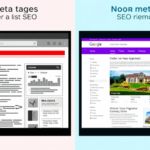Debugging Gamification Systems Without Losing Your Users
Tracking Loyalty Without Turning Your Database Into a Dumpster Fire
Somewhere between my second loyalty plugin and my third beer that evening, I learned something important: tying user status to reward history in WordPress can very silently brick your backend. Especially when you go from 500 to 5,000 active users because someone decided to post you on Hacker News. The plugin (I won’t name it, but it rhymed with “Loyalboil”) stored every badge unlock as a serialized array in a single user meta field. Guess how that scales when every badge now includes seven properties and a timestamp? It doesn’t. You will time out on profile load. And your admin dashboard will flicker like it’s on WebTV.
Do not store historical state as deeply nested, growing blobs per user. Prefer immutable event logs. Time-based unlocks? Log them. Badge dependencies? Calculate on read, not write. Otherwise, you’ll be querying Frankenstein JSON from MariaDB and wondering why your CPU fan sounds like a blender full of forks.
You want to build a system that ages gracefully as your user base grows, even if your gamification scheme inevitably changes (spoiler: it will). Keep it stateless where you can. Append-only where you must.
Reward Decay Systems and the Unexpected Math Chaos
So I was trying to implement a reward decay system — the kind that gently fades user points for inactivity. The logic seemed sound: subtract 1% of their points per day after 30 days of no logins. But something was off after the first month. My leaderboard kept shifting in weird patterns that didn’t match real engagement. Turns out, the decay compounded faster than expected because, duh, I applied it on every user fetch instead of scheduling a daily batch.
This sounds small until your most loyal users drop from top 10 to top 50 overnight all because they visited at 2AM when the decay interval hit just right.
The Flaw in Real-Time Calculation
“If you calculate decaying points on user login, you create an incentive to never log in.”
This is a logic pit that destroys user trust.
- Always schedule decay operations as server-side jobs — not client triggers.
- Use fixed intervals (e.g., every 12 hours), so rankings shift predictably.
- Keep pre-decay scores alongside current points if historical rank matters.
- Provide transparency: show users when and how their points decayed.
The Undocumented Quirk of Session-Based Badging
Most gamification tools let you assign badges based on session activity. Cool. But here’s the mess: If a user opens two tabs, some platforms track each as a separate session. So when you assign a badge like “Stayed for 5 minutes,” it might fire twice. Or not at all, depending on which tab closed last.
With RewardPress (a surprisingly decent plugin when used carefully), I saw repeat badge triggers that should have been one-time. The culprit? The badge system used window.sessionStorage — not cookies — to confirm event state. Which doesn’t persist between tabs.
Fix requires a cross-tab signal approach, or syncing over broadcast channels — assuming you even have access to the front end logic. Sometimes you’re stuck writing a middleware that de-dupes rewards on your own server by matching IP + user + badge + timestamp ±15 seconds.
This is the kind of session nuance that shows up only in high usage edge cases, which is why you’ll never read about it on plugin pages. Watch out for invisible badge spam.
When Analytics and Game Logic Mismatch — Users Notice
I once ran a campaign where users earned points for commenting. I swear we validated every event: one comment, one point. Except we didn’t. Turns out, Google Analytics events were firing on keypress — not on submit. So some users saw a popup say “You just earned a point!” before they even posted. Their comment could fail for spam, JS error, or just hitting backspace. But they’d still get the dopamine.
After about a week, players on a Minecraft forum I cross-posted to called it out: “You can farm loyalty points just by opening the comment box.” They were right.
Fixing It Without Breaking Flow
The challenge was syncing validation with slow async form handling. Here’s what I learned:
- Hook rewards to server-side completion events only (e.g., post ID returned).
- Defer UI messages until confirmation, not input.
- Log fake-reward cases in a separate table so you can purge them cleanly.
If your system and your metrics disagree, trust your users — they’ll smell the cheating before you do.
Delayed Feedback Can Kill Game Loops
One of the first things I noticed with early gamification attempts was that if you reward users more than ~2 seconds after the event, your system feels broken. Like, visibly, obviously broken. If you’re using deferred processes or third-party APIs to validate rewards (some platforms even batch point updates every 10 minutes!), it completely ruins the feel.
“Gamification doesn’t work unless it feels responsive.”
That quote came from a game dev I met at Reboot Blue. He was right. We dropped batch updates in favor of issuing 80% of the reward instantly, then reconciling the rest post-validation. Feels snappy, still accurate.
Instant feedback isn’t just UX polish. It produces 2x more engagement. At least on our newsletter click-through gamification system, where we tested this poorly and learned by wrecking one batch of user trust.
Troubleshooting Chrome Extension Conflicts with Loyalty Scripts
A weird one: on my site where I ran a point-for-share system tied to Twitter (yeah, I know), some users would fail to receive credit. Turned out, a privacy-focused extension like Privacy Badger was nuking the XHR calls my gamification script used for tracking shares. It didn’t matter the network tab looked clean to me. For them, tracking never happened.
I now throw a debug overlay in dev mode that exposes dropped XHRs based on expected pattern matching. If you set up your gamification script assuming all scripts run clean, you’re gonna hit a wall.
Extensions don’t just block your ads. They kneecap your engagement mechanics and you won’t know unless you simulate broken environments. Run your site with:
- uBlock Origin + NoScript (simultaneously)
- Extensions that randomize user agents
- Social media containers (especially on Firefox)
See what survives. Gamification tools love to depend on sanitized browser APIs. Users don’t live in sanitized environments.
Gamifying Reader Engagement Inside RSS — Painful but Possible
Okay, this one is niche. I wanted to reward newsletter subscribers not just when they clicked links or visited the full blog, but when they interacted via RSS feeds in tools like Feedly or NetNewsWire. The problem: you have no script access inside RSS readers, and only limited referrer data.
What finally worked?
I embedded UID tokens in RSS link URLs. When clicked, they hit a middle-layer redirect endpoint that credited the user and logged the engagement — then redirected them to the actual article. Yeah, it’s hacky. But I built a tiny Symfony controller for the job, and it let me run RSS-specific engagement rewards (e.g., “10 days in a row reading from Feedly”).
The catch? Some readers scrape your entire post and never hit your site. Not much to do there unless your audience is unusually technical and RSS-heavy. But if even a third of users interact via links, it’s trackable. Feedburner used to do this. You just have to pick up where they left off.














